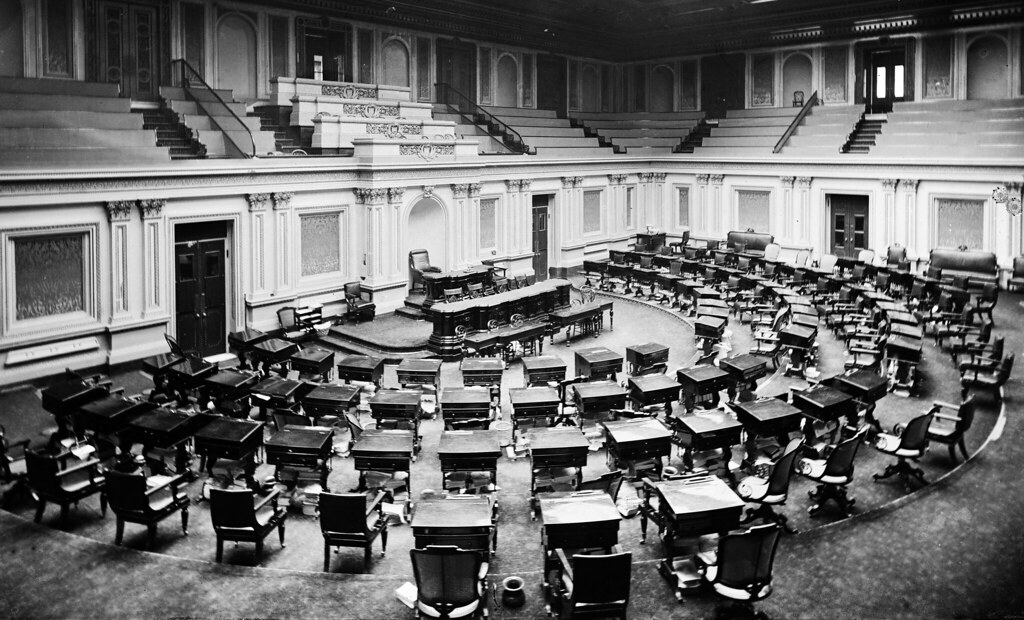As President Joe Biden and his team prepared to take the reins of government last month, the new administration read book after book about the famed first 100 days of former President Franklin D. Roosevelt’s presidency. If Biden’s flurry of executive orders and proclamations in the two weeks since he took office is any indication, he paid attention to what he was reading. In just 12 days, Biden signed 25 executive orders, 10 presidential memos and four proclamations. Thanks to him, the federal government will not renew its contracts with private prisons, the U.S. will rejoin the Paris Climate Agreement and transgender people can serve in the military. All are good policy choices, but the manner in which Congress forced Biden to make them is anything but.
Had Biden been able to trust Congress, especially the Senate, to collaborate and compromise quickly to pass any of his agenda, he would not have needed to advance it through executive orders, memos and proclamations. Americans’ nationwide polarization is responsible for much of Congress’ ineffectiveness, but the legislature’s own rules, especially the modern filibuster and the prohibition on earmarks, are just as guilty. Together, Biden and congressional leaders should bring back the speaking filibuster and earmarks to cool the nation’s political temperature, produce lasting policy achievements and prevent future polarization.
Biden’s incentives to act quickly during his first 100 days are strong; his administration’s inherited economic, racial and public health crises are collectively more serious than any other since Roosevelt took office four years into the Great Depression. The latter’s flurry of executive orders and legislation were so wide-ranging and lavished with praise that they gave rise to the concept of a president’s first 100 days. Arguably, they also worked. Of the 15 bills he shepherded through Congress during his first 100 days, many of the most important were legislative. But far more revolutionary than that was his use of 99 executive orders to enact other, more specific policy changes. In the short term, that strategy made sense, but its broader legacy is less rosy. Roosevelt’s strong, timely leadership legitimized governing by unilateral decree, and as the rising prevalence of executive orders throughout the last 80 years suggests, his successors have noticed.
But Roosevelt was not shortsighted or foolish. In his time, heavy reliance on executive orders made sense because Congress and the people who had elected it were overwhelmingly Democratic. There was no real gridlock in Congress, and he was able to make policy via legislation very effectively so he risked no backlash by issuing a flood of executive orders. They weren’t necessary tools of policymaking so much as they were convenient measures warranted by the urgency of the economic crisis at hand. Since the 1970s, however, executive orders have become commonplace and, consequently, harmful to the policymaking process.
After the Democratic Party lost both houses of Congress in the 2010 midterm elections, former President Barack Obama faced a recalcitrant, obstructionist conservative majority in the House, the Senate or both for the remainder of his time in office. Obama’s executive orders further antagonized his Republican opposition in Congress and polarized the country. More importantly, history proved many of his executive orders inherently transitory. The Trump administration simply undid those it disliked, and already, Biden has reversed some of those reversals. Some, like rejoining the Paris agreement, were easy, while others, especially those related to domestic climate regulation, may take years to complete, which will prevent the agencies involved from making much progress on other issues. Obama had no choice but to use executive orders to make dangerously insecure policy; congressional Republicans’ obstructionism made anything else impossible. The present question then becomes not how to minimize the number of executive orders that presidents use but instead how we should reduce the partisan rancor in Congress that forces them to do so.
We should start by changing, not abolishing, the filibuster, which is an obstruction tactic allowing senators to delay voting on a bill by prolonging floor debate on it. It is responsible for more of the Senate’s gridlock than any other institutional factor. Originally, a simple majority of senators could vote to end floor debate, but in 1806, the Senate abolished that rule, meaning that any senator could postpone a vote on legislation by holding the floor continuously alone or in a rotation.

The U.S. Senate chamber in 1873. (Creative Commons/katexic)
The Senate changed its mind again 111 years later, deciding that senators could break filibusters if two-thirds of members present voted to do so. A few consequences of this system, known as the speaking filibuster, meant that using it became extremely difficult in practice. First, a vote to break a filibuster would freeze all Senate business, meaning that its institutional costs were massive. Even more importantly, those filibustering had to make sure that at least one-third of the Senate both agreed with them and stayed physically present throughout the whole filibuster in case its opponents tried to halt debate.
But in 1975, Southern senators did away with all of that; they confined the filibuster to the morning session, reducing its difficulty and allowing the Senate to move on to other business in the afternoon. That single-handedly hamstrung the Senate’s ability to overcome minority obstructionism. The institutional cost of using the filibuster vanished; instead of bringing everything to a grinding halt, other Senate business could move forward unchecked. Since 1975, the number of filibusters per year has skyrocketed as the number of major bills passed has plummeted. That system continues into the present day, and it is why passing so much crucial legislation in the Senate without at least 60 votes is often impossible.
The temptation to abolish the filibuster completely is strong, and it might even be more efficient than the status quo. But it is not the best solution we have. Just as packing the Supreme Court would and just as abolishing the filibuster for Supreme Court confirmations already has, abolishing it completely could recklessly escalate polarization, disincentivize bipartisanship and encourage both parties to abuse slim legislative majorities in the future. Democrats do not even have enough votes to rid themselves of it in the Senate; at least two Democrats, Sens. Kyrsten Sinema (D-Az.) and Joe Manchin (D-W.Va.), oppose it publicly, as do almost all Republicans. Instead, Biden should work with both parties’ congressional leaders to bring back the speaking filibuster of the 20th century. That’s how we can turn the partisan temperature in this country down for decades to come and accomplish real policy change.
The other way in which the Senate could foster bipartisanship is much simpler but almost as important. Where reviving the speaking filibuster would allow cooperation across the aisle, bringing back earmarks would incentivize it. Earmarks, which are small provisions of large appropriations bills that direct money toward specific groups, projects and institutions in specific lawmakers’ districts, were an integral part of U.S. policymaking for centuries until congressional Republicans did away with them in 2010 to reduce corruption. Two years ago, Senate GOP leaders made that change permanent.
Opponents of earmarks, such as Sen. Ted Cruz (R-Texas), attack them as tools of corrupt politicians who only care for their own reelection prospects. But these critics delude themselves if they believe that eliminating rational self-interest from politics will ever be possible. Expecting anything else from politicians is utterly unrealistic and denies human nature. If we need to operate under conditions of self-interest, then we might as well control it such that it produces unselfish policy and does not veer into outright corruption. Earmarks, which would give every senator and representative an added incentive to buck their party orthodoxy and make deals that benefit both their constituents and the U.S. public, are a simple and elegant method of making that happen. Their skeptics are right, however, that earmarks can enable corruption, which is why congressional leaders should bring them back under the enhanced transparency and accountability measures that prevailed from 2007 until 2010. If everyone in Congress were to have a greater incentive to pass bills than to vote in line with their party leadership, Congress might begin working again.
When he officially declared victory on a cold November night in Wilmington, Delaware, Biden promised to become a president for all Americans, whether they voted for him four days earlier or not. By calling your representatives, organizing around filibuster and earmark reform, and taking the conversation mainstream, you can help him do that. Biden could be a president as transformative as Roosevelt. But he can only do it if the Senate lets him.
Ben Thomas (23C) is from Dayton, Ohio.
Ben Thomas (23C) is from Dayton, Ohio, and he majors in comparative literature, political science and Russian, East European and Eurasian studies. He currently chairs the Wheel’s editorial board, and he has also served as a managing editor at both the Wheel and the Emory Undergraduate Research Journal, an Interdisciplinary Exploration and Scholarship (IDEAS) Fellow, a Center for Law and Social Sciences research fellow, a teaching assistant in five courses and Chief Justice of SGA’s Constitutional Council. He has published research in literary studies and educational policy, and he speaks Russian and German. Thomas has also interned with Emory’s English department, the Carter Center, a congressional campaign and California’s Environmental Protection Agency. After graduation, he plans to earn an advanced degree in Slavic studies and teach at the post-secondary level.





